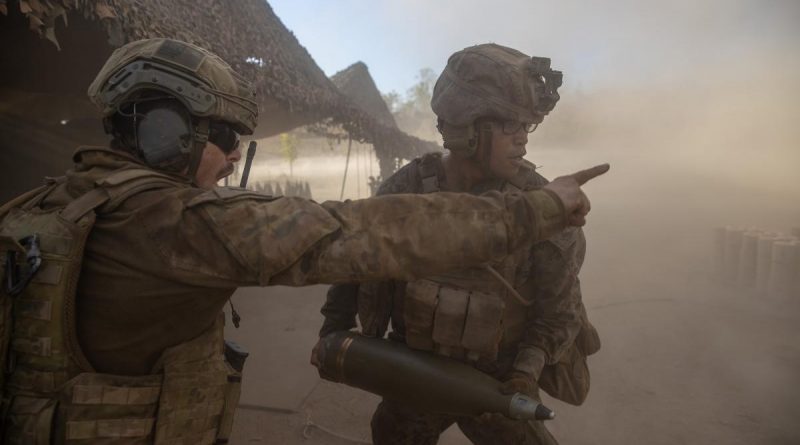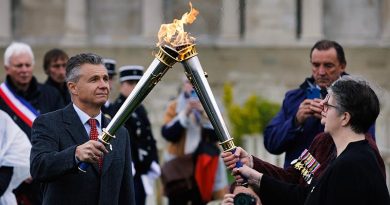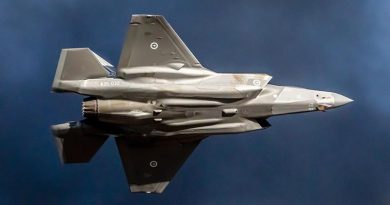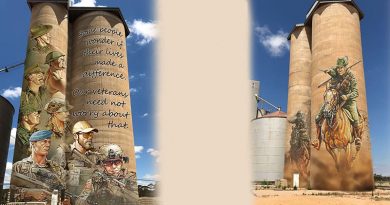Ten years of Marine Rotational Force – Darwin
Share the post "Ten years of Marine Rotational Force – Darwin"

On November 16, 2011, Australian Prime Minister Julia Gillard and United States President Barack Obama announced an extension of Australia’s existing Defence alliance with the United States.
CAPTION: Australian Army Bombardier Damian Williams, left, confirms the ammunition type with United States Marine Corps Lance Corporal Kevin Matias during a live-fire activity as part of Exercise Koolendong. Story by Lieutenant Gordon Carr-Gregg. Photo by Corporal Rodrigo Villablanca.
The United States Force Posture Initiatives (USFPI), including the establishment of the Marine Rotational Force – Darwin (MRF-D), were core to the alliance and a tangible demonstration of the shared interests and deep engagement with the Indo-Pacific region.
Ten years on from the announcement of the USFPI, up to 2500 US Marines deploy to Northern Territory military bases through the dry season each year, living, working and socialising with Army, Navy and Air Force members from March to October.
MRF-D has grown in size and complexity since the first rotation in 2012, reaching 2500 Marines in 2019.
This year, 2200 Marines undertook teaming and training with the Australian Army 1st Brigade, and together achieved significant joint training objectives and outcomes.
Commander Headquarters Northern Command Colonel Marcus Constable said, “Our alliance with the United States is our most important defence relationship”.
“The focus of the MRF-D into the future will be what best supports our strategic objectives to increase engagement with our regional partners; deepen interoperability between the ADF and the US Marine Corps; and position our forces to respond to potential crises in the region,” he said.
“The alliance is the cornerstone of Australian security and together we are committed to ensuring a secure, inclusive and resilient Indo-Pacific.”
MRF-D participate in multilateral exercises including Carabaroo and Hari’i Hamutuk, engaging with regional partners from Timor-Leste, Papua New Guinea, France, Malaysia, Thailand, Singapore, Vietnam and the Philippines in previous years, as well as most recently Indonesia and Japan.
Combined exercises such as Crocodile Response, Southern Jackaroo, Loobye and Koolendong focus on strengthening bilateral military capabilities and preparing ADF forces for crisis and contingency response including humanitarian assistance, security operations and high-end warfighting.
Each rotation of MRF-D brings new capabilities to the field. This year had a Role 2 field hospital with medical equipment including surgical, radiology and laboratory tech, a low-altitude air defence detachment with Stinger missile launchers and the RQ-21 Blackjack unmanned air vehicles.
This year’s rotation coincided with the 70th anniversary of the Australia, New Zealand and United States (ANZUS) treaty.
MRF-D 21 Commanding Officer Colonel David Banning said MRF-D was a highly capable force, prepared to operate with its Australian partners.
“Being able to continue MRF-D rotations while making the necessary adjustments to deal with the COVID-19 pandemic is a testament to the alliance relationship and the discipline of our forces,” Colonel Banning said.
“We look forward to next year’s MRF-D rotation, and the opportunity to continue to deepen our ties with our Australian partners and engage with regional partners in the Indo-Pacific.”
Announced at this year’s Australia-United States Ministerial Consultations (AUSMIN) was an agreement to further enhance US force posture cooperation in Australia in four key areas including: integrated logistics capability; existing enhanced air cooperation; maritime sustainment cooperation; and evolving bilateral and multilateral operations and exercises.
.
.

.
.
Share the post "Ten years of Marine Rotational Force – Darwin"





